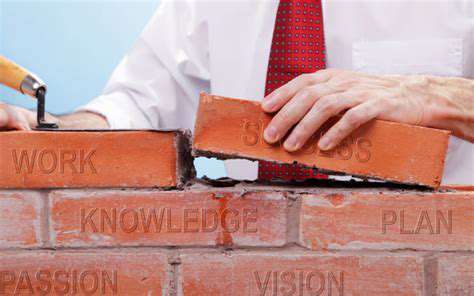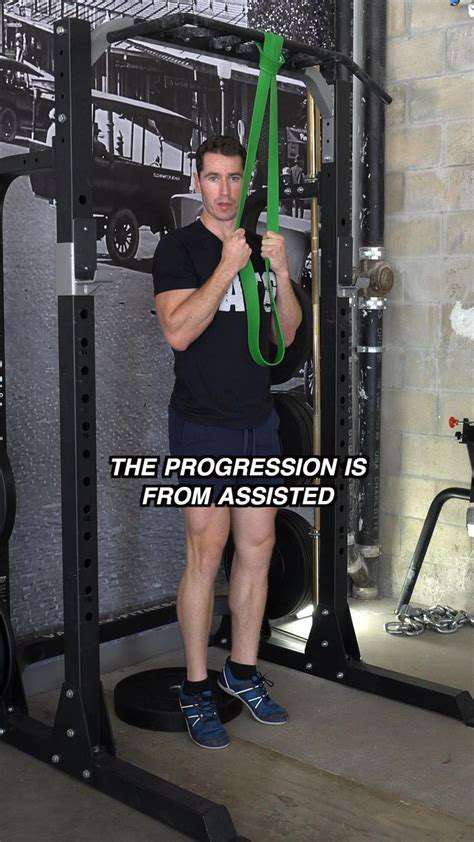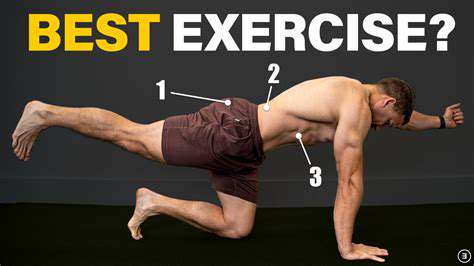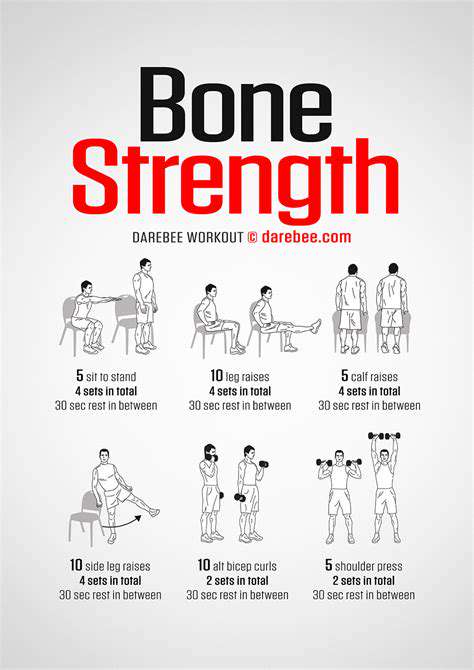Strength Training for Seniors with Hip Replacements: A Beginner's Plan
Understanding the Importance of Post-Surgery Strength Training
Hip replacement surgery is a significant procedure, and while it's crucial for restoring mobility and reducing pain, it doesn't magically rebuild the strength lost in the surrounding muscles. Strength training plays a vital role in the rehabilitation process, helping to improve muscle function, increase bone density, and enhance overall stability. This targeted approach helps patients regain independence and improve their quality of life post-surgery.
Restoring Muscle Mass and Function
Hip replacement surgery often leads to a loss of muscle mass in the surrounding areas. Strength training exercises, tailored to the individual's recovery, work to rebuild this lost muscle mass. This is essential for improving strength and power in the legs, which are crucial for everyday activities like walking, climbing stairs, and getting up from a chair. Rebuilding muscle mass also helps to support the new hip joint and reduce the risk of future complications.
Improving Joint Stability and Reducing Pain
Strengthening the muscles around the hip joint provides crucial support and stability. This support is vital for preventing further injury to the newly implanted hip. Exercises that focus on strengthening the glutes, quads, and hamstrings are particularly important. Improved stability can significantly reduce the risk of pain and discomfort, allowing patients to engage in more activities with greater confidence and less worry about potential complications.
Enhancing Mobility and Functional Independence
The ultimate goal of hip replacement surgery is to restore mobility and functional independence. Strength training exercises designed specifically for the hip and surrounding areas are tailored to improve range of motion, balance, and coordination. This allows patients to perform everyday tasks with ease and confidence, from walking errands to participating in social activities.
Protecting the New Hip Joint
Strengthening the muscles around the hip joint helps to protect the new implant from further stress and strain. This is crucial for ensuring the longevity of the hip replacement. The exercises should be progressively challenging to encourage optimal muscle growth and support without putting undue pressure on the new joint. This long-term protection is essential for a positive recovery and a successful outcome.
Reducing the Risk of Complications
Post-surgical strength training can significantly reduce the risk of complications after hip replacement. By improving muscle strength and stability, patients are better able to manage daily activities and prevent falls or other complications that could potentially delay recovery. Exercises should be carefully monitored and adjusted based on the individual's progress, ensuring that the exercises are safe and appropriate for their needs.
Improving Overall Quality of Life
Beyond the physical benefits, strength training significantly improves the overall quality of life for patients after hip replacement. Improved mobility, reduced pain, and increased confidence allow patients to participate more fully in activities they enjoy. This can lead to greater independence, better social interaction, and a more positive outlook on life after surgery. It's a crucial component in regaining the ability to live life to the fullest.

Peak demand, in the context of energy systems, refers to the highest rate of energy consumption within a specific time period, often a day or a month. This surge in demand frequently occurs during periods of high activity, such as the hottest hours of summer or the busiest times of the day. Understanding peak demand is crucial for effective energy management and infrastructure planning.

Progression and Maintenance: Long-Term Strength Training

Understanding Long-Term Progression
Long-term progression, in any field, necessitates a deep understanding of the underlying principles and factors influencing the process. This involves not just recognizing the current state but also anticipating future developments and adapting strategies accordingly. It's crucial to monitor key indicators and metrics to gauge progress and identify potential roadblocks. Effective long-term progression often hinges on proactive planning and consistent effort, acknowledging that setbacks are inevitable and part of the learning process.
Furthermore, long-term progression requires a flexible approach. The environment is rarely static, and new challenges and opportunities may emerge. Adapting strategies and methods to accommodate these changes is essential for continued success. A steadfast commitment to continuous improvement, fueled by feedback and reflection, is paramount.
Maintaining Momentum
Sustaining momentum is a critical aspect of long-term progression. It's not enough to achieve initial milestones; the key is to maintain the drive and motivation to continue moving forward. This requires a consistent effort, a supportive environment, and a clear understanding of the goals. Motivation often wanes over time, so it is crucial to find ways to re-energize and stay inspired. Regular self-reflection and goal-reassessment can help maintain focus and direction.
Adapting to Change
Change is inevitable in any long-term endeavor. The ability to adapt to evolving circumstances is crucial for continued success. This involves recognizing shifts in the environment, identifying new opportunities, and adjusting strategies to maintain alignment with objectives. Adaptability requires flexibility, resilience, and a willingness to learn from both successes and failures. This also includes embracing new technologies and innovative approaches.
Addressing Setbacks and Challenges
Setbacks and challenges are unavoidable parts of any long-term progression. Acknowledging these obstacles as opportunities for growth is essential for maintaining a positive outlook. A proactive approach to problem-solving and a willingness to learn from mistakes are key to overcoming obstacles and achieving long-term goals. Developing a support network and seeking guidance from experienced mentors can also be invaluable in navigating these difficulties.
Developing Strategies for Sustainability
Sustainability is paramount for long-term progression. A strategy must be developed that accounts for long-term implications and ensures that the chosen path remains viable over time. This involves considering resource allocation, environmental impact, and economic viability. Careful planning and foresight are essential to ensure that the chosen course remains sustainable and beneficial in the long run. This also includes considering the potential impact on various stakeholders.
Measuring and Evaluating Progress
Measuring and evaluating progress is crucial for understanding the effectiveness of strategies and making necessary adjustments. Implementing key performance indicators (KPIs) and regularly assessing performance against these metrics allows for a comprehensive understanding of progress. This process also enables timely identification of areas needing improvement. Accurate and timely data analysis is essential for informed decision-making and strategic adjustments.











